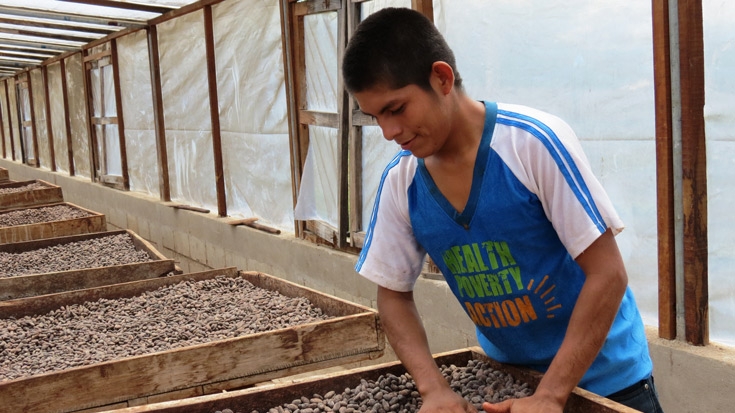The world’s soft spot for chocolate could become an economic strength for several Latin American countries, especially emerging cocoa producers such as Nicaragua.
The world consumes no less than 20 million kilograms of chocolate a day, a volume that is increasing thanks to the Chinese population’s love for sweets. Cocoa exports to China more than doubled in the last decade, surpassing Western Europe, the biggest consumer. This year, cocoa prices have already increased around 25% to US$2,800 per metric ton.
Nicaragua wants to capitalize on this voracious appetite with a gourmet, organic and top quality product that is better than that of its direct competitors: Brazil and Ecuador, which are among the ten largest producers in the world. According to official figures, as of November 2013 cocoa had generated US$5.23 million in revenue for the country, 25% more than in all of 2012.
The potential for growth in Nicaragua’s cocoa production and exports is enormous: the country has 1.9 million hectares of land suitable for cocoa production, although according to data from the 4th National Agricultural Census, only 11,000 hectares are actually being used to grow the fruit.
Behind the chocolate bars, thousands of peasants have been raising the “fruit of the Gods” — as cocoa was called by the ancient Mayans — since mid-16th century, earning international fame after conquistador Hernan Cortes drank it alongside Montezuma, taking it to Spain.
However, it is believed that it was in Nicaragua where Christopher Columbus first tasted cocoa, although he did not pay much attention to it. And it is there that cocoa cultivation and chocolate production is currently turning into an economic engine for peasants.
Nicaragua is now the biggest producer of cocoa in Central America, harvesting 5,800 metric tons last year, 60% of which were exported while the rest was consumed domestically.
Although cocoa originates in the Americas, the cocoa market is currently dominated by Africa: Ivory Coast is the biggest producer in the world. For its part, Latin America produces more than 15.4% of the cocoa consumed around the world, with Brazil and Ecuador in the lead.
Organic —and cheaper — cocoa.
Despite strong market competition, Nicaragua boasts several characteristics that turn it into a cocoa-producing paradise.
On the one hand, climatic conditions in most of Nicaragua’s territory — humid tropical — are ideal for cultivation. Moreover, it is an excellent substitute for other products such as coffee, given that when it is combined with agroforestry it can help create a microclimate, thus mitigating the abrupt climate changes that have been occurring in recent years.
Recognized for its fine aroma and flavor, Nicaraguan cocoa is of high quality and is already in demand internationally, mainly in other Central American countries, where 62% of its exports go, followed by Europe with 37%.
Part of this success is due to the 10,500 cocoa producers in the country, 98% of whom are small-scale producers with holdings of between 1 and 7 hectares, which have incorporated crop improvement systems and prioritized organic production.
One of them is Doña Brenda Salazar, a resident of a remote community in Nicaragua’s North Atlantic Autonomous Region (RAAN, in Spanish), who has no doubts when stating that following the introduction of cocoa she has managed to leave her barefoot period behind to become a great businesswoman in a town that used to lack running water.
“In the past, my house was my life, I was asleep. With the introduction of cocoa, we learned to negotiate, sign contracts, plant, take advantage of the land,” Doña Brenda, who is in charge of the Nuevo Sol cooperative, explains. She is one of almost 7,000 people taking part in a sustainable management project for agroforestry systems that is supported by the World Bank, is aimed at indigenous people, peasants and people of African descent, and is being carried out in the RAAN and Matagalpa, with most beneficiaries being women.
This initiative managed to consolidate the work of 29 organizations in the region with training in organic production and certification, as well as cost calculation, marketing and business plans.
According to experts, the incipient cocoa businesspeople are ready to enter the global market due to the good quality of their product, which is also organic and cheaper, unlike the high costs commonly associated with natural production.
“Organic production costs are lower than conventional ones, it increases productivity, improves both the environment as well as the quality of life for producers and offers buyers a healthier product,” explains World Bank social development specialist Mary Lisbeth Gonzalez.

